Aquarium sand helps in producing a natural habitat for fish. Moreover, it also supports plants and improves the aesthetics of the tank. There are several types of sand that you can use in your tank. However, suitable type selection is important. You’ll also learn about different types, selection criteria, black and white aquarium sand, and their relevant information. For more, scroll down the page.
Content Table
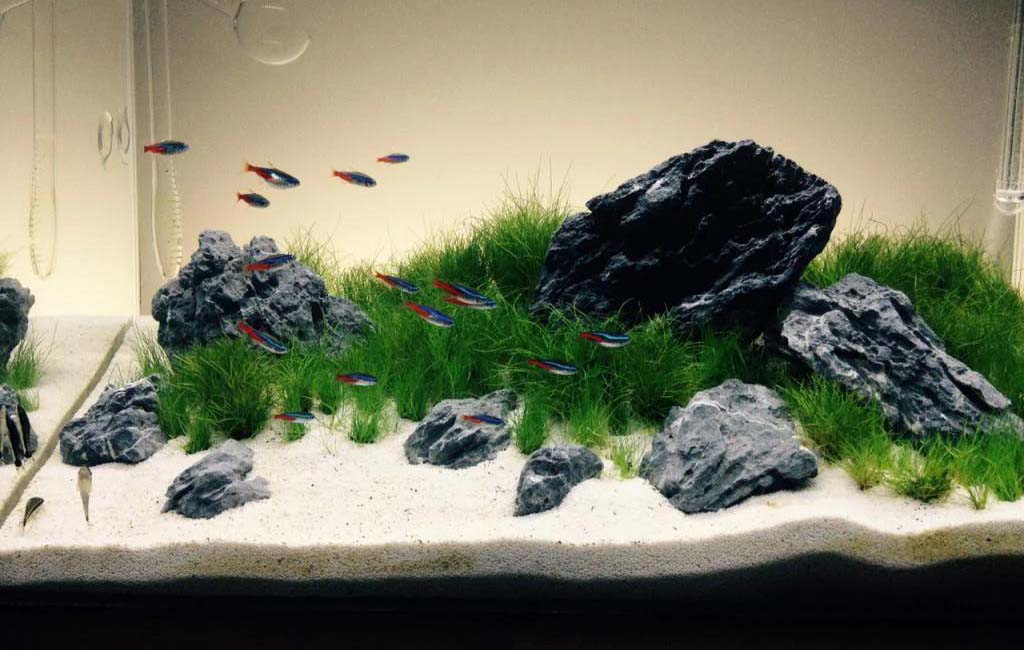
aquarium sand
Aquarium Sand
Sand is among the best aquarium substrate options. It gives a natural look and is easy to install, clean, and maintain. Several sand types are in the market for aquariums. Here are some of the most suitable and widely used sand types, sources, unique aspects, and suitable fish types for each type.
| Sand type | Natural occurrence | Where to buy | Peculiarities | Suitable fish types |
| Play Sand | Extracted from quarry or finely sifted river sand | Hardware and home improvement store | Affordable Fine-grained Compactable Neutral pH |
Bottom-dwelling fish, especially Corydoras catfish, kuhli loaches, etc. |
| Silica Sand | Extracted from a quartz-rich riverbed or beach sand. | Available at pool supply stores | Smooth texture Uniform grain size Inert Maintain the water chemistry |
Suitable after proper rinsing for freshwater fish species |
| Black Sand | Extracted from volcanic deposits or magnetic-rich sand | Online retailer Special aquarium stores |
Improve Aesthetic Inert Fine-grained Disturbance can cause clogging in the filter |
Bright color fish, e.g., neon tetras, bettas, dwarf gouramis, etc., and shrimps. |
| Aragonite Sand | Extracted from tropical coral reefs and fossilized marine beds | Marine supply stores | Maintain pH Increases water hardness Ideal for high-pH tanks |
African cichlids and marine fish like clownfish and gobies. |
| Crushed Coral Sand | Extracted from coral reefs and shell riched beaches | Aquarium stores | Buffers pH Maintain alkalinity Initially can cloudiness |
Hardwater and saltwater fish, e.g., mollies, guppies, swordtails, angelfish, and wrasses. |
| Quartz Sand | Extracted from natural quartz deposits and river and marine beds | Aquascaping stores | Pure white Inert Hard Visually appealing |
Color fish species and freshwater shrimps |
| Live sand | Harvest from tropical marine ecosystem | Aquarium stores | Contains beneficial bacteria Enhances biological filtration Expensive |
Marine fish species, i.e., clownfish, damselfish, and blennies and reef-dwelling invertebrates |
| Natural River Sand | River beds and freshwater streams | Direct collection from the source and use after proper rinsing | Inexpensive Requires sterilization It offers a natural aesthetic. |
Biotop species and species like rainbowfish |
Aquarium Sand for Freshwater Tanks
There are several sand types that you can use in your freshwater aquarium. Here are some famous sand substrate types.
Play Sand
Play sand is an impressive option for freshwater aquariums. It does not alter the water parameters. Moreover, it suits beginners as it is inexpensive and inert.
Pit Sand
It is another suitable option for the freshwater aquarium. It helps to improve the tank’s aesthetics. It is extracted from the depths and is rich in numerous elements, including iron, garnet, gypsum, olivine, and quartz.
Pool Filter Sand
You can use pool filter sand due to it is uniform in size after thoroughly washing. It avoids packing as it has a coarser grain size. Freshwater-colored fish go well with it due to its white color.
Black Diamond Blasting Media
This sand is an inexpensive option as it is extracted from ground molten coal slag. It’s also an excellent substrate due to its coarse size. It goes well in the color fish tank. However, it has two issues, i.e., thorough rinsing before adding to the tank and it speculates the fish waste.
Deck Coat Sand
Variegated color sand is another good option for freshwater aquariums. It effectively hides fish waste and is easy to clean but rarely available.
River Sand
River sand is an excellent option for freshwater tanks due to its color and grain shape. It is off-white or tan-colored, round grains, and contains trace minerals. These minerals are beneficial for the aquarium inhabitants.
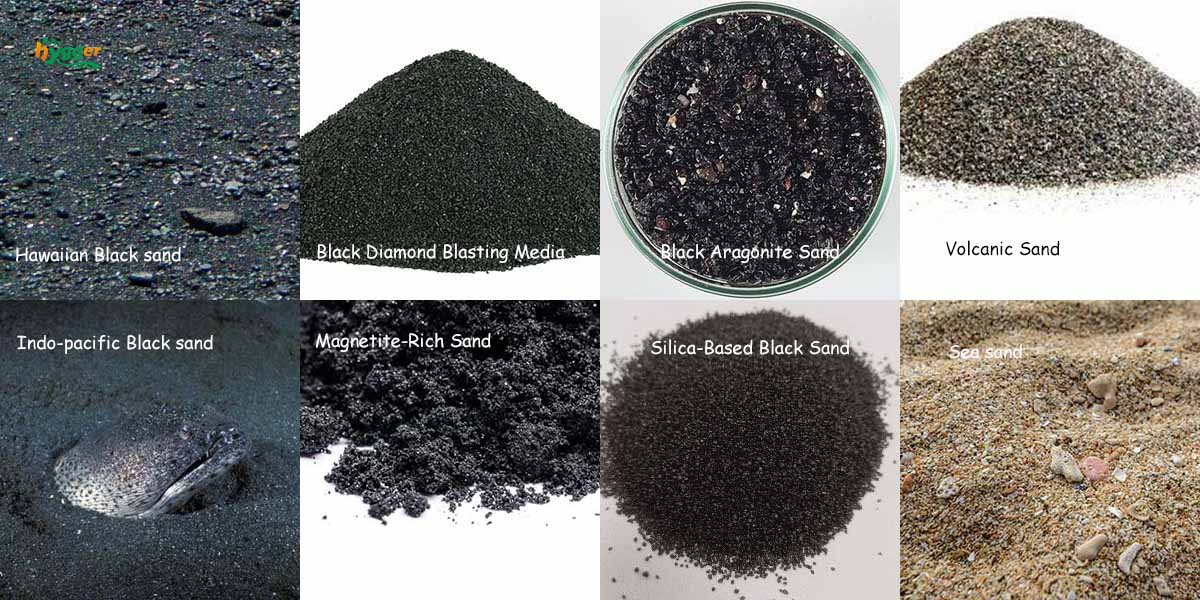
black aquarium sand
Black Aquarium Sand
The black aquarium sand consists of various types of colored sand. These are suitable for aquascaping. It helps to improve the aesthetics of the tank when filled with bright decor, plants, and fish. Here are some famous types that are categorized under black sand.
| Black Diamond Blasting Media | Silica-Based Black Sand | Black Aragonite Sand | Volcanic Sand |
| Iron or Magnetite-Rich Sand | Indo-pacific Black sand | Hawaiian Black sand | Sea sand |
Role in Tanks
The sand serves various roles in the home and commercial aquarium. Here is a brief of it.
- It creates a modern look rather than the traditional white substrate and colored objects.
- It masks out the algae and presents a cleaner look.
- The coarse black aquarium sand improves the filtration of the tank. However, it’s less efficient than gran gravel.
- Fish species that live in dark substrates feel at home with this substrate.
- It help in plant growth as they provide stable porous for plant root systems.
- Some black sands have essential plant nutrients that help to grow them.
How to Use Black Sand in Home Aquarium?
Follow the following steps to introduce black sand in your aquarium.
Sand type selection
There are several types of black sand. Choose the type that suits your tank. Inert sand types, e.g., volcanic or silica-based sands, are suitable for freshwater aquariums. Aragonite Sand is suitable for high pH and saltwater tanks and African cichlid tanks.
Rinse the Sand
Rinse the sand to remove dust and other debris. Add the sand in a bucket. Fill it with water and stir it thoroughly. Remove the water from the bucket. Repeat the procedure until the water becomes clear.
Aquarium Preparation
If you are setting up a new tank, empty it. It will allow you a better distribution. However, if you want to add it to an active tank, turn off the filter and slowly add it to the tank.
Adding the Sand in the Tank
Calculate the volume of sand you need. Add a minimally 2-inch thick layer according to the tank’s dimensions. After calculating, add the calculated volume. Use some shape body or hand for even distribution in the tank.
Fill it with water
Place a plastic sheet on the substrate and fill it with water. Slowly pour the water to avoid disturbance. You will witness cloudiness for the first 24 to 48 hours.
Add the Decor
After adding the water, install decor, plants, and other objects in the tank. If you want to add plants, use nutrient-rich black soil or root tabs to maintain the plant’s fertilization.
Filtration
After settlement, install the filter and run it. Initially, you need to work on the mechanical and biological filtration.
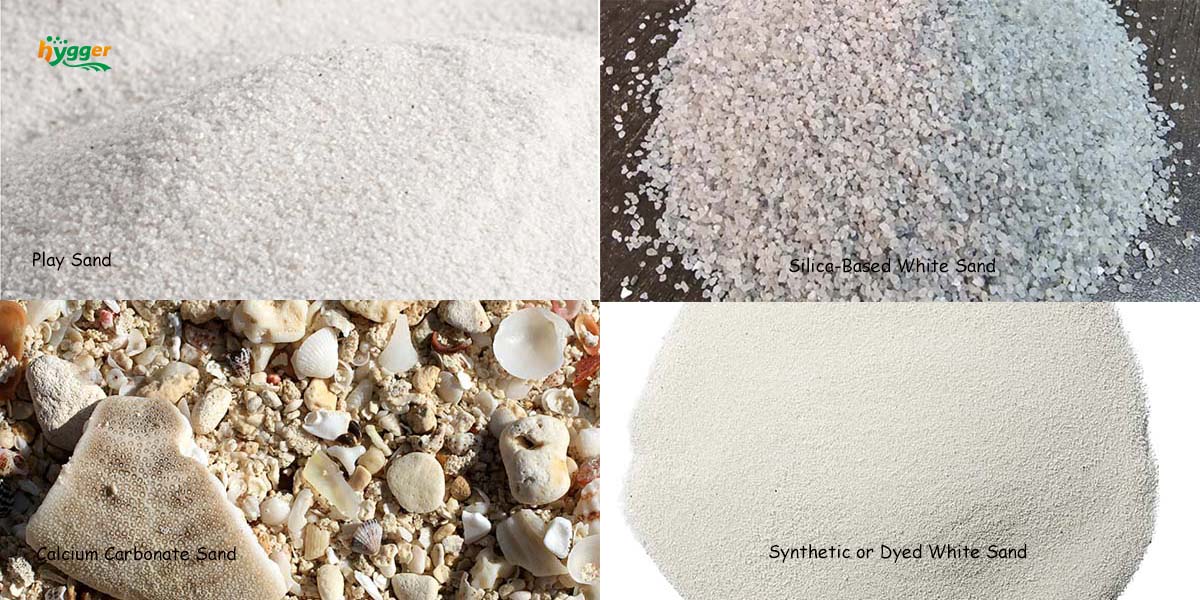
white aquarium sand
White Aquarium Sand
Like the black sand, white sand also consists of various types of sand. It’s named after its light appearance. Here are some sand types that lie under the white sand category.
| Silica-Based White Sand | Synthetic or Dyed White Sand |
| Play Sand (White Variant) | Calcium Carbonate Sand (Aragonite or Crushed Coral Sand) |
Role of White Sand in Tanks
Here are some roles of white sand in aquariums.
- It helps to create a bright and spacious look for the tank.
- It helps to create a clean look.
- Colorful fish, plants, and decors are suitable as they help to create a contrast.
- It promotes the natural behavior of the fish as they are at home.
- It supports plant growth and smooth texture to avoid injury to the fish.
- Calcium carbonate sand helps to buffer the pH of the tank.
- It helps in temperature regulation.
How to Use the White Sand in Home Aquariums?
Here is a step-by-step guide on how to use the white sand in your home aquarium.
- Select the proper type for your tank.
| Type | Suitable for |
| Silica Sand | Inert and suitable for freshwater tanks |
| Calcium Carbonate Sand | Marine and high-pH tanks |
| Play Sand | It’s suitable for stable water parameter tanks. |
| Synthetic Sand | Its inert behavior makes it suitable for freshwater tanks. |
- Rinse it to remove dirt and other debris.
- Prepare the tank. The new tank should be empty, and the operational tank should have no working filter.
- Pour the sand in the tank, i.e., at least 1 to 2 inches for only fish tank and 3 inches for the planted tanks.
- Slowly pour the water and avoid cloudiness.
- Regularly test the water parameters.
- Install decor and make it functional.
Sand Cleaning
There are three possible reasons why sand is blackening.
| Anaerobic Conditions | Organic Waste Accumulation | Algae or Mold Growth |
When it comes to cleaning, you can use two ways to clean your tank substrate: partial cleaning and deep cleaning. Partial cleaning is suitable for established tanks. Deep cleaning is an option for compacted substrates, high blackening, or browning sand.
Partial Cleaning
A gravel vacuum and a small bucket are required for partial cleaning. Follow the following steps.
- Turn off the stirring equipment, i.e., filters, pumps, etc.
- Use a gravel vacuum filter to remove the dirt from the sand surface to the bucket via siphon.
- Slowly stir the sand to remove the trapped gasses and dirt from the substrate.
- Remove the colored sand from the tank and replace it with live white sand.
Deep Sand Cleaning
-
- Remove the fish from the tank.
- Remove the sand layer by layer.
- If there is extensive damage, remove it. Otherwise, rinse it.
- Reintroduce the clean or new sand and distribute it properly with desired depth.
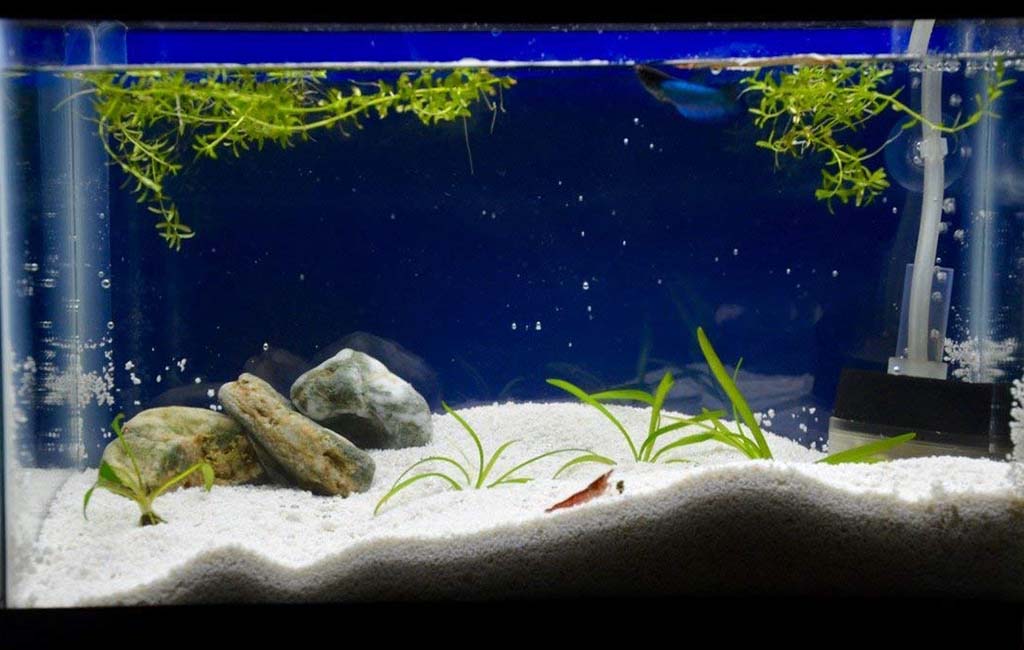
Types of aquarium sand
Can It Use Play Sand in Aquariums?
Yes, you can use play sand in the tank. It is more cost-effective than many other options, has a neutral pH, and is aesthetically appealing. Moreover, it’s a suitable option for bottom-dwelling fish and burrowing fish as it’s soft and regularly shaped.
Parting Thoughts
Several types of aquarium sand improve the aesthetics, tank health, and other aspects, such as play sand, pit sand, pool filter sand, etc. Freshwater and saltwater tanks both use different types. Volcanic Sand, Silica-Based Black Sand, Iron or Magnetite-Rich Sand, etc., are examples of black aquarium sand. They give a clean look and help to create contrast.
Similarly, white aquarium sand options also improve tank aesthetics and promote plant growth. Check your priority and select the type according to your requirements. Properly clean it, and enjoy it with your desired sand type.
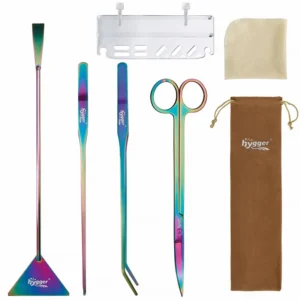
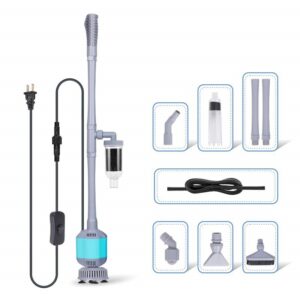
Leave a comment